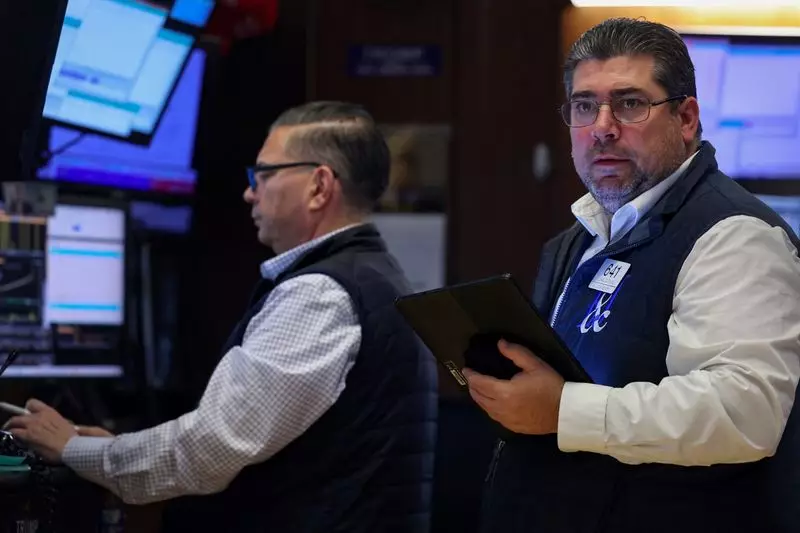The stock market exhibited a positive shift on Tuesday, driven by gains in technology shares, particularly within the S&P 500 and Nasdaq indices. Investors found themselves digesting a blend of economic signals and political developments, including President-elect Donald Trump’s provocative tariff proposals aimed at major trading partners. Furthermore, important revelations from the Federal Reserve’s recent meeting created a backdrop of uncertainty as market players navigated this whirlwind of news, signaling potential shifts in monetary policy and trade relations.
On a day marked by volatility, the technology sector emerged as a standout performer. Despite ongoing concerns about trade tensions, shares in major tech firms like Microsoft and Apple contributed significantly to the overall market gains. Microsoft’s stock rose over 2%, reflecting a robust recovery within the tech-heavy Nasdaq, which climbed a substantial 0.63%. This resurgence in technology stocks suggests investor confidence amid the broader economic uncertainties, underscoring the sector’s fundamental resilience despite external pressures.
Contributing to market dynamics, the latest minutes from the Federal Reserve’s meeting revealed a divide among officials regarding future interest rate adjustments. Although some economists, like Jamie Cox, project further cuts to bolster the economy, others take a more cautious stance, emphasizing that upcoming economic data—including employment figures and inflation rates—will guide decisions moving forward. Such mixed signals from the Fed have left investors on edge, contemplating how monetary policy might shape the economic landscape in the near future.
In an unexpected turn, President-elect Trump announced a series of conditional tariffs aimed at Canada and Mexico, posing a significant challenge to free trade agreements previously in place. Additionally, an increase in tariffs on Chinese imports was suggested, heightening the risk of escalating trade wars. This news spurred a notable decline in automotive giants like Ford and General Motors, whose operations span across North America and are deeply intertwined with these trade decisions. Analysts, including Robert Pavlik, expressed concern about the implications these tariffs could have on manufacturing costs and overall revenues for companies reliant on overseas production.
Despite the potential challenges posed by tariff implementations, major stock indices ended the day on a positive note. The Dow Jones Industrial Average rose by 123.74 points, reflecting a gain of 0.28%. The S&P 500 climbed by 34.26 points, indicating a 0.57% increase, while the Nasdaq Composite surged by 119.46 points, or 0.63%. These numbers exemplify a market resilient enough to withstand geopolitical stressors while displaying steady growth in key sectors such as technology and healthcare.
In the healthcare arena, companies reacted variably to ongoing political discourse. Eli Lilly’s stock rose 4.6% on news of proposed expansions to Medicare and Medicaid coverage for anti-obesity medications, showcasing a strong link between legislative measures and stock performance. Conversely, the Dow faced pressure from declines in biopharmaceutical company Amgen, which experienced a nearly 4.8% drop after disappointing results from an experimental treatment.
Overall, the day witnessed a complex interplay between sectors, with declining stocks marginally outnumbering advancers by a ratio of 1.57-to-1 on the NYSE. This subtle imbalance highlights the cautious sentiment that still looms over the market, as investors remain vigilant about economic indicators that will influence future market trajectories.
Tuesday’s market performance illustrated a recovery led by technology stocks amidst swirling concerns regarding trade policies and the Federal Reserve’s contemplated actions. As investors navigate these multifaceted developments, a careful observation of economic data in the coming weeks will be crucial. The resilience shown by the markets could reflect a broader confidence, yet the stormy waters of trade relations and regulatory shifts require close attention as the year draws to a close.

